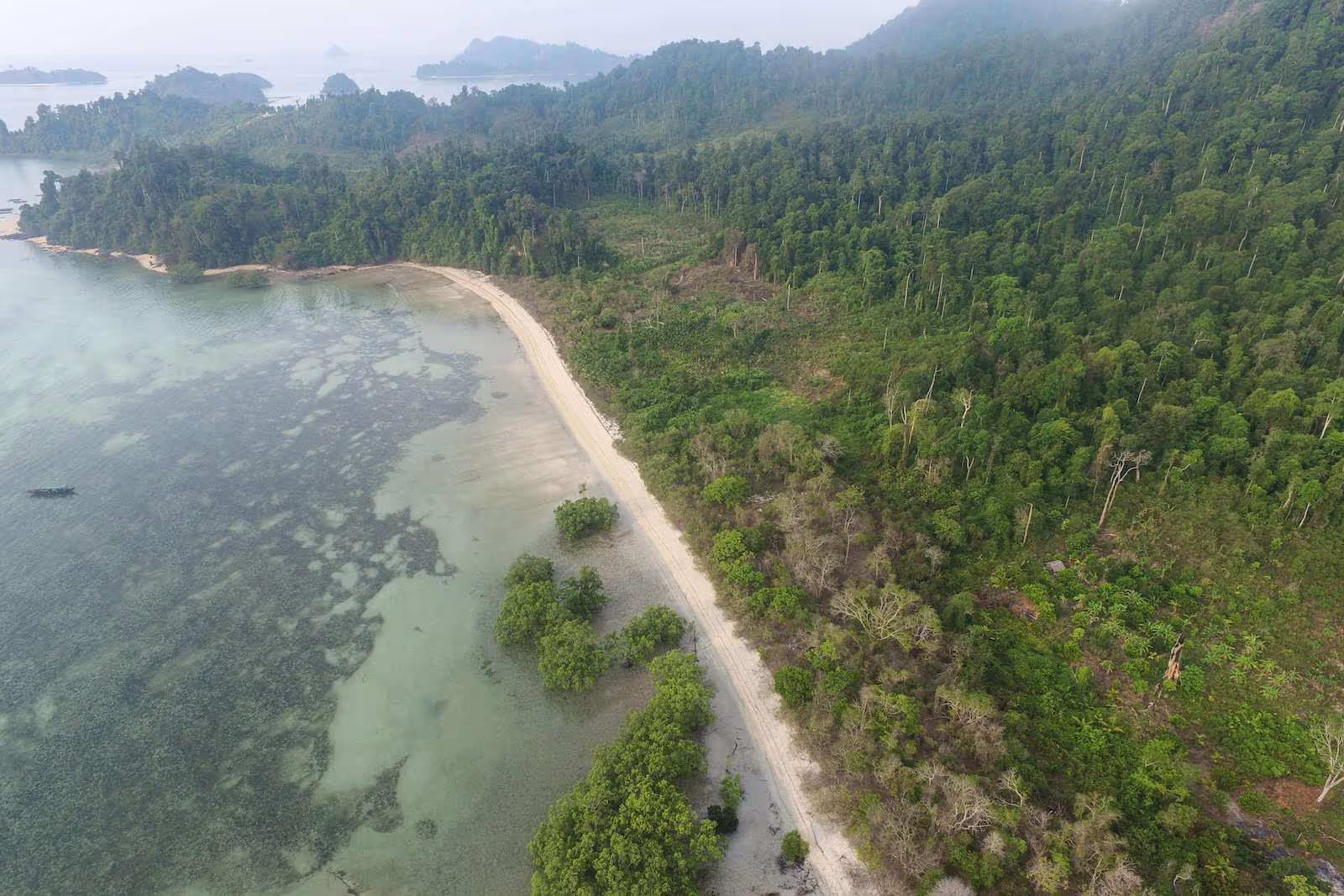As global warming continues to increase due to carbon dioxide and other greenhouse gas emissions, governments and industry leaders are strategizing to not just reduce, but also offset, those emissions. New and innovative strategies are increasingly being deployed to help the global community meet the goals of international agreements like the Paris Accords.
While planting trees has been a symbol of commitment to restoring the Earth’s natural balance for decades, recently there has been renewed attention on restoring forests as a nature-based solution to climate change. There are two dominant approaches to forest management for climate change: reforestation, in which already existing forests are allowed to regrow, and afforestation, in which forests are planted in areas where there was previously little to no forest cover.
Where are some of the world’s biggest forestry projects?
The idea of reforestation and afforestation is not new—in fact some projects were implemented so long ago that a new generation of foresters are learning from their mistakes. One of the most famous examples is China’s Billion Tree project, which began 40 years ago, and was less successful than its creators predicted it would be due to lack of species diversity and poor planning and management.
In 2017, a large-scale reforestation effort led by Conservation International began in the Amazonian rainforest. The project’s goal is to restore 73 million trees in the Brazilian Amazon by 2023. But as the COVID-19 pandemic upended infrastructure and economies around the world, progress on many rainforest restoration projects stalled.
As a response to some of the pitfalls afflicting existing forestation projects, innovative technological companions to forest management have been entering the marketplace. For example, SilviaTerra uses cloud computing technology to map tree density and diversity across the United States, then use the data to help foresters make better forest management decisions.
How effective are forestry projects at mitigating climate change?
Because forests are a natural carbon sink, they hold a lot of promise for offsetting carbon emissions. A study published in 2019 reported that there are 678 million hectares available for forest management projects around the world, and if every hectare was put to use, the forests could absorb a quarter of the world’s fossil fuel emissions over the next 30 years. In general, the study found, nature-based solutions could “provide up to 37 percent of the emission reductions needed by 2030 to keep global temperature increases under 2°C—30 percent more than previously estimated.”
3 Co-benefits of reforestation and afforestation
1. Restoration of ecosystem balance
When natural forests are destroyed as a result of logging and clear-cutting for agriculture and development, a wide variety of species lose their natural habitat. The World Wildlife Fund estimates that 8 out of 10 of the world’s land-dwelling species live in forests, including the endangered chimpanzee, orangutan, and gorilla—some of humans’ closest genetic relatives. Reforestation helps add that deforested acreage back, giving endangered species more surface area to roam, reproduce, and help maintain our planet’s natural ecosystem.\
2. Drought prevention and soil amendment
Soil runoff happens when a flood of rainwater pulls soil into waterways, and it threatens ecosystems because it removes nutrients from soil while also polluting rivers and streams with soil elements and fertilizers. Over time, soil erosion can make once-fertile land prone to drought and inhospitable to crops and even native trees. Forest vegetation helps slow rainwater before it can create soil runoff by distributing it across leaves and branches. Root systems also trap moisture in the soil, making it healthier. Keeping soil healthy is important for local communities whose food sources depend on fertile land, so adding trees back into previously stripped soil via reforestation ultimately helps not only the flora and fauna of a region, but also people.
3. Job creation
Forest regeneration can also lead to job creation as the global community comes up with new, more sustainable ways to manage forests. For example, the European Neighborhood and Partnership Instrument Forest Law Enforcement and Governance (ENPI-FLEG) Program helps countries create long-term forest management plans. Through this program, 43,000 Vietnamese households cultivated 76,500 hectares of afforestation projects.
Another forestation project in China involved reforesting 39,514 hectares of the Daxing’anling forest, which was destroyed by a wildfire in 1987. In 2012, Daxing’anling was incentivized to begin selling forest carbon sequestration, which became eligible for the China Certified Emissions Reduction program. The reforestation project sequestered 1.5 million tons of carbon between 2010 and 2014 and created 5,460 local jobs. It also revitalized tourism in Daxing’anling, bringing even more money to the region.
3 Risks of reforestation and afforestation
All forests are not created equal, and recent examples of reforestation and afforestation projects gone awry can almost all be traced back to poor planning and forest management. Forests are complex and delicate ecosystems, and highly trained professionals as well as detailed plans must be involved in order to ensure the success of any project. A lack of planning can result in new problems and risks.
1. Encourages kindling growth
In Alberta, Canada in the 1980s, the government experimented with converting swampland into forest—to a destructive end. The trees soaked up so much water from the surrounding bog that they overgrew their canopies, reducing the growth of a critical species of peat moss that aided in forest fire prevention. A drier moss replaced the peat moss, leading to a fire so destructive that as much if not more carbon was released into the atmosphere than was sequestered by the afforestation project to begin with.
2. Creates unbalanced water tables
One downfall of China’s Billion Tree project was that many of the trees were planted on arid soil around the country—but the tree species chosen was so thirsty that it hurt, rather than helped, the drought prevention effort.
3. Introduction of non-native species
Planting non-native trees can introduce non-native and invasive species, which can damage existing flora and fauna as well as nearby agriculture. In an example also drawn from China’s Billion Tree Project, many of the trees planted were afflicted by an Asian longhorn beetle infestation which worsened with each planted tree.
As technology advances, foresters and the organizations that support them are learning more about how smart approaches to forest restoration and management beyond “just planting trees” can contribute not only to carbon sequestration efforts, but also both ecological and economic balance.





